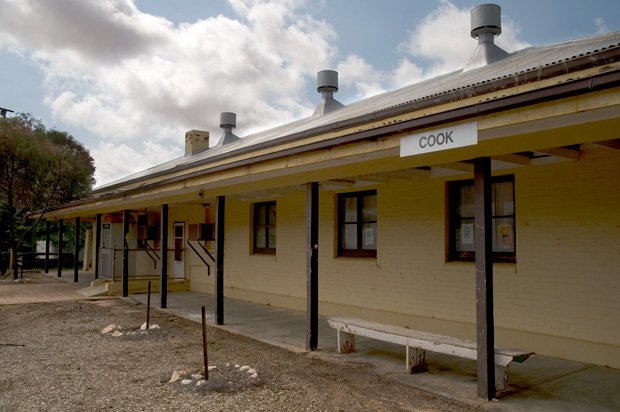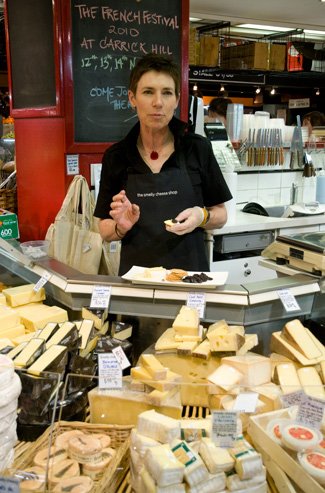On the Indian Pacific: whistlestops

Online editor Carolyn Barry reports back as she travels across the nation on the Indian Pacific – read more in this series.
I HAD TO RUB my eyes a few times when I woke up this morning. I thought I might still be dreaming, because what I saw out of the window didn’t make sense.
It looked like the dreary rainclouds and spots of rain on the window. Normally, I wouldn’t have given this a second thought, but we were supposed to be at the start of the Nullabor Plain – one of the most arid and desolate regions in Australia, with no natural sources of water. The view outside perplexed me.
Indeed, I wasn’t seeing things – it was raining. In fact, it had dumped about 31 mm overnight, enough to leave puddles in the once dusty red dirt. Even five hours into the Nullabor (this 478 km stretch is the longest straight section of track in the world), the green carpet hasn’t stopped. In fact, near Forest, a town of two people (who service an emergency aeroplane landing strip), the colours have expanded to include purple, white, yellow and pink flowers.
Rare moisture
It’s a sight that the Indian Pacific drivers and locals haven’t seen before either, they say. Andrea, who – along with her husband David – runs the tourist stop in Cook on the Nullarbor plain, says she’s never seen it this green in her four-and-a-half years of living here.
The once bustling town of about 50 is now a ghost town of four – Andrea, David and his parents. Until a few years ago, Cook residents were relied upon to maintain the train tracks in the area. But technological advances made those jobs redundant and the locals deserted. Most of the buildings, including a schoolhouse and residences, are now condemned.

This whistlestop is one of the more interesting, though brief, side trips you can see on the Indian Pacific journey. Others include a bus tour of Broken Hill, a choice of several tours in Adelaide, and mining town Kalgoorlie. Depending on how well the train is running on time, options at Adelaide include a wine tour and a quick trip to the zoo (where pandas are a popular attraction).
Market stop
One that’s highly recommended, though, given the brevity of the stop (about 2.5 hr), is a tour of the Adelaide Central Markets (see image, right).

Sampling cheese in the market (Photo: Carolyn Barry).
The markets are not just a collection of food stalls; they are really the cultural and historic heart of Adelaide. The markets have been around for 140 years and encompass food producers ranging from fruits and veggies, to gourmet meats, cheeses, sweets and small goods. If you want excellent quality, fresh food in Adelaide, this is where you come. Many immigrants have come to Adelaide, having escaped authoritarian regimes and hardships in their home country to start afresh here. The result is an authenticity and pride in the products sold.
It’s not widely known outside of the city, but Adelaidians are real foodies. And food is a big part of their culture, says Mark Gleeson, former chef and now a creative food tourism expert. Mark owns Zuma cafe and a sumptuous bakery/sweets shop in the Central Markets, and he also runs tours of the market. “If you love food, this town is unbelievably good,” he says.
RELATED ARTICLES
Indian Pacific – more blogs in this series.
Indian Pacific celebrates 40 years
Gallery: Indian Pacific




